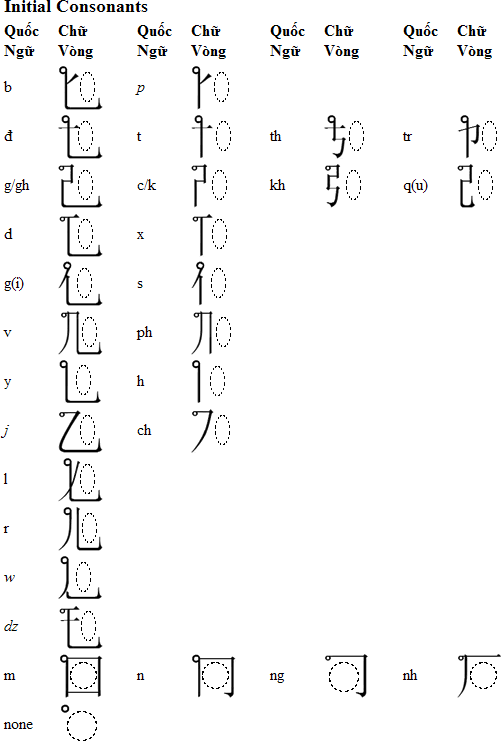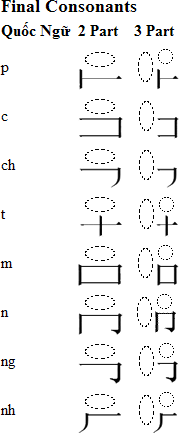Trantanese is a language and writing system created by Albert Nguyen for use in a fictional country, Trantan. The letter shapes are based on parts of Chinese characters but they are arranged in syllable blocks in a similar way to Korean Hangul.
Originally Albert intended to create a syllabic writing system for Vietnamese, but found this too difficult. Instead of scrapping all his work, he decided to create his own language similar to Vietnamese that could use his writing system.
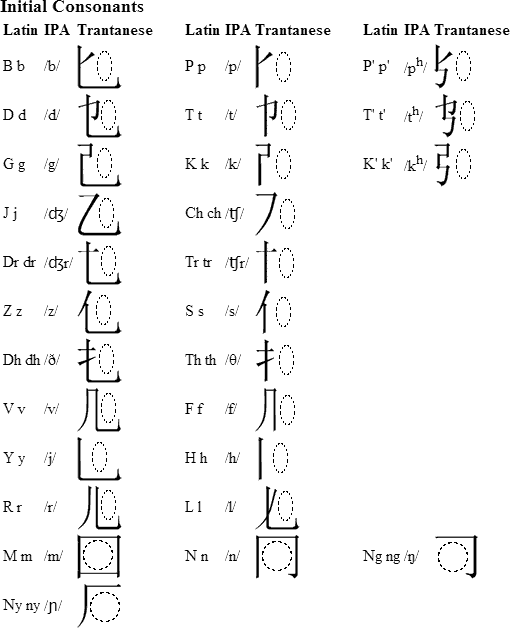


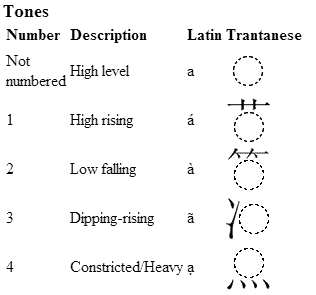
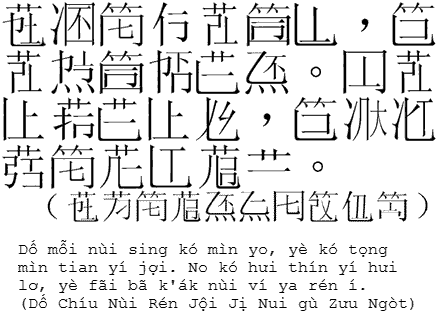
(Article 1 of the Universal Declaration of Human Rights)
If you have any questions about Trantanese, you can contact Albert at: albert.v.nguyen[at]gmail[dot]com
Other writing systems invented by visitors to this site
From OmniGlot.com
Originally Albert intended to create a syllabic writing system for Vietnamese, but found this too difficult. Instead of scrapping all his work, he decided to create his own language similar to Vietnamese that could use his writing system.
Internal history
Trantan is a fictional country in southeast Asia that isolates itself from the rest of the world, but occasionally sends out observers to see if there are any linguistic, cultural, or political changes in the outside world that should be incorporated into its own society. As a result of its geographical location and the observers, it has been heavily influenced by Vietnamese and Chinese.Notable features
- Trantanese it normally written from left to right, top to bottom. The traditional top to bottom, right to left pattern is still used for artistic and ceremonial occasions.
- Each syllable block can consist of up to four parts, an initial consonant, a middle vowel or vowel cluster, a final consonant and tone mark. The only required component is a vowel.
- There are 27 possible initials, 29 possible middles, 6 possible finals, and 4 possible tone marks (a fifth tone is indicated by the absence of a tone mark).
- Trantanese uses the same tones as in Vietnamese, minus the hỏi tone.




Sample text

Translation
All human beings are born free and equal in dignity and rights. They are endowed with reason and conscience and should act towards one another in a spirit of brotherhood.(Article 1 of the Universal Declaration of Human Rights)
If you have any questions about Trantanese, you can contact Albert at: albert.v.nguyen[at]gmail[dot]com
Scripts invented by Albert Nguyen
Chữ Vòng, TrantaneseOther writing systems invented by visitors to this site
From OmniGlot.com


 Ngày khởi sự
Ngày khởi sự

